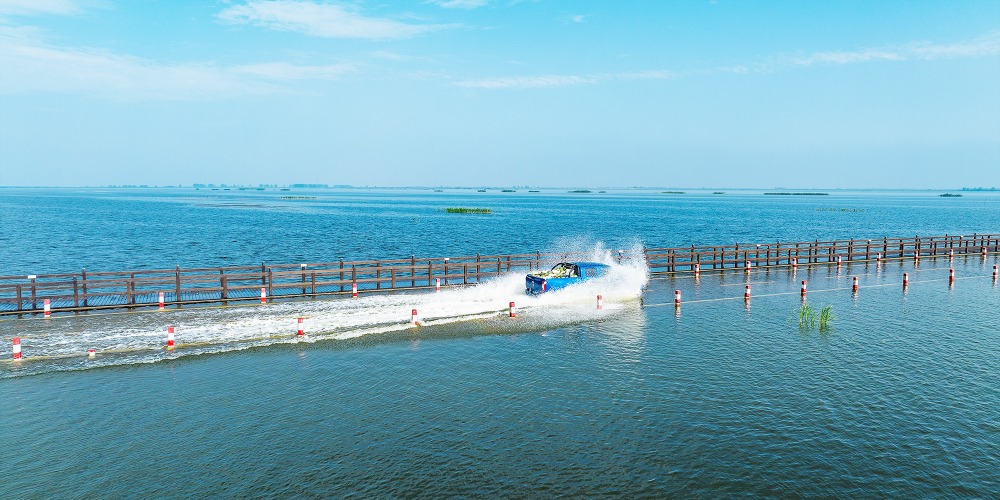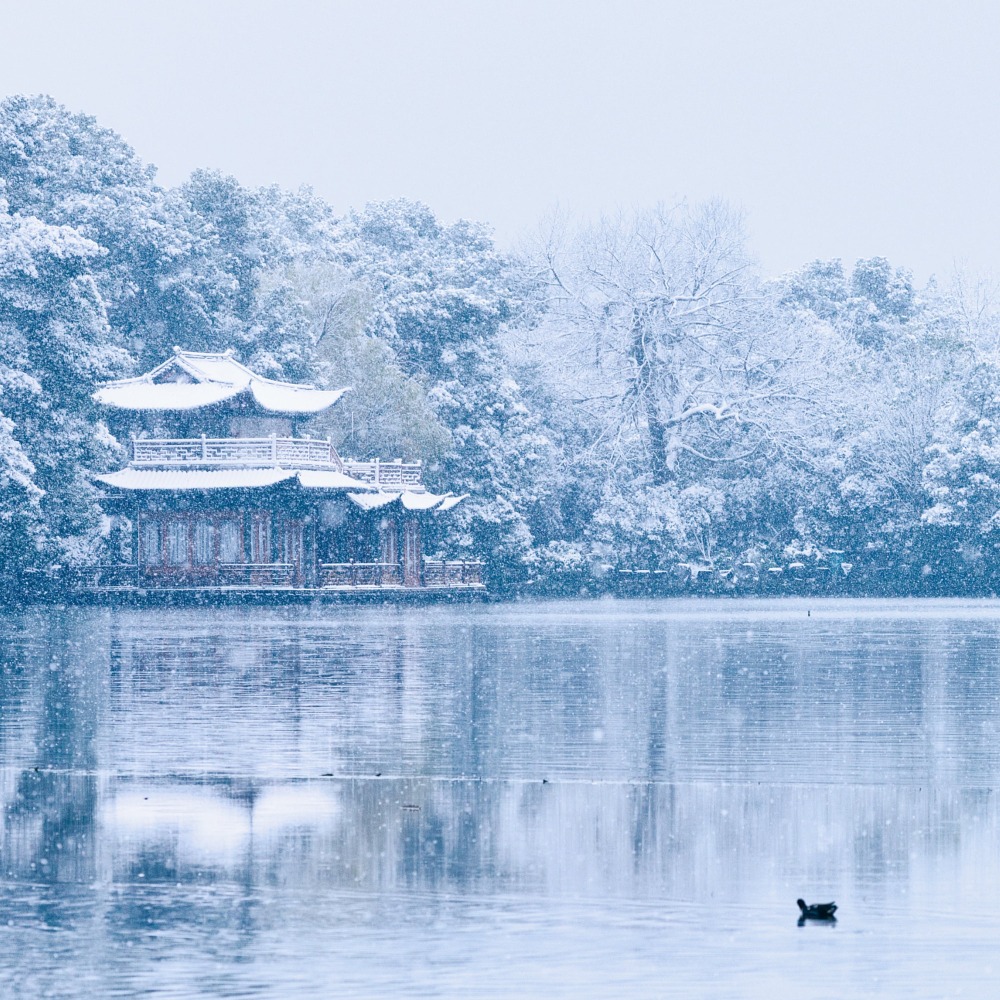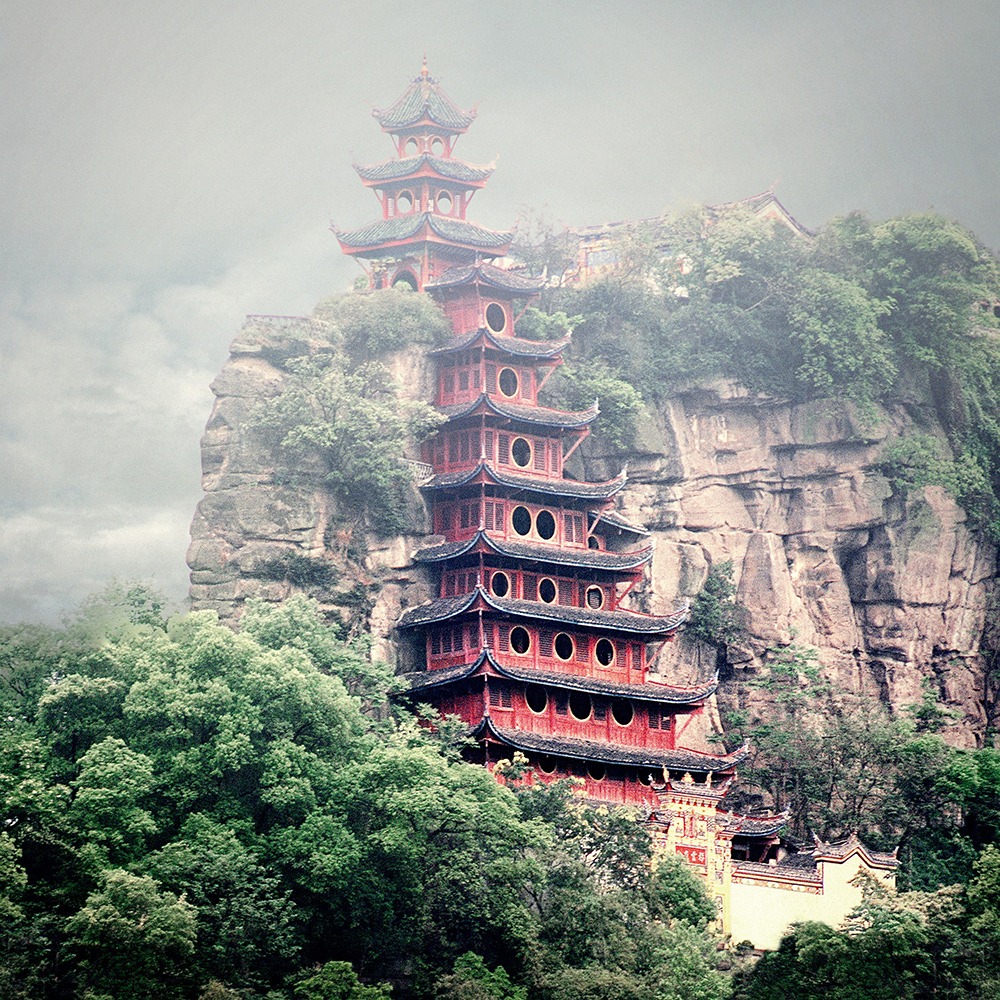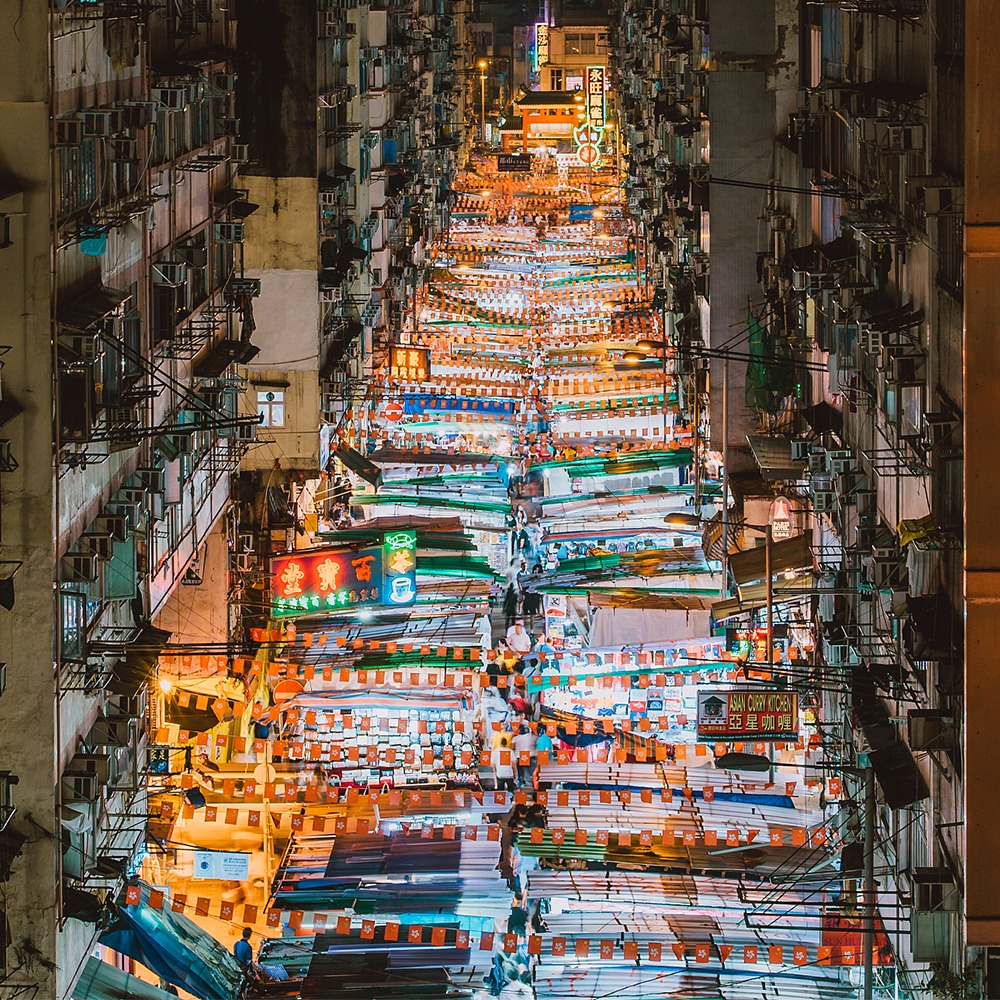Published : 2024-08-27
As its name implies, the Hanging Temple (懸空寺), located on Mount Hengshan (恆山) hangs precariously on a steep cliff, with a deep abyss below. It has been listed as one of the world's top 10 most precarious buildings.
How did the ancients build it on top of the cliff when there was no machinery? And how has it been able to stand firm despite thousands of years of weathering?
A millennial architectural wonder of China

Situated on a segment of steep cliff in the Golden Dragon Gorge of Mount Hengshan, are several sections of walkways supported by red wooden pillars.
Above the walkway, more than 40 pavilions of various sizes stand suspended in mid-air. This is the world-famous Hanging Temple.
The Hanging Temple was first built during the Northern Wei Dynasty (386-534) and known as the "Temple in the Sky".
The temple enshrined the three masters of Daoism, Buddhism and Confucianism, namely Laozi, Sakyamuni, and Confucius, together in one hall, making it the only existing temple in China where the "three religions" of Buddhism, Taoism, and Confucianism are united.

Read more: Lingtong Rock Temple in Fujian: Carrying forward Chinese culture on the cliff
The mystery of the Hanging Temple’s endurance
The Hanging Temple is located halfway up a steep mountain, with a vertical distance of nearly 100 metres from the highest point of the temple to the bottom of the valley, both sides being like cliffs carved by a blade.
The Hanging Temple of Hengshan, despite enduring nearly 1,500 years of weathering, still stands solidly. This all thanks to the ancient builders' extraordinary architectural wisdom.

Firstly, in terms of geography, the Hanging Temple is suspended from a precipitous mountain wall though, the location where it is situated is actually a ravine surrounded by two mountains.
Directly above the temple is a natural notch eroded by the river, so that when there is a rockfall from the mountain, the rock will fall down in a parabolic line and the temple will not be hit.
Secondly, the Hanging Temple makes full use of the "elastic structure" property of mortise and tenon structure to effectively reduce the huge impact of earthquakes.
As the earthquake vibrates, the architectural components move relative to each other, thus cushioning the impact.
This is one of the main reasons why the Hanging Temple has survived several major earthquakes intact.
Read more: The mysterious Luoxindun Island that appears once a year in the water
Supported by just 27 horizontal beams
When it comes to the most breathtaking architectural marvel of the Hanging Temple of Hengshan, it is impossible to ignore the 27 horizontal beams that support the entire temple.
Yes, you heard it right, just 27 beams were enough to uphold this precarious temple for a thousand years.
These beams are square wooden beams made of hemlock wood, a local speciality of Shanxi, with a diameter of about 50 cm.
Some of them are fixed into the mountain through a mortise and tenon structure, while the others support the main body of the temple and extend about 1m below it to connect to the walkway.
Each beam is anchored and wedged firmly into the mountain, and after a thousand years of weathering, they have already become one with the mountain side, making them extremely solid and sturdy.
Moreover, these beams have all been soaked in tung oil, thus they are not susceptible to termite damage, which provides them with anti-corrosion properties.

Read more: Discover the secret of Master Zhang and the hanging coffin in Jiangxi
However, for ancient people without the aid of modern machinery, how did they manage to construct this hundred-metre hanging architecture? It's believed to be the biggest curiosity about the Hanging Temple.
Over the years, experts from various fields have been dedicated to studying and guessing these construction mysteries, but they still have not come to find the most accurate answer.
Whether from the perspective of architectural art or technical expertise, the Hanging Temple of Hengshan undeniably constitutes a legendary feat in the history of Chinese architecture.
It inspires awe for the ingenious craftsmanship of ancient builders and leaves a millennium-old mystery to the world.





























